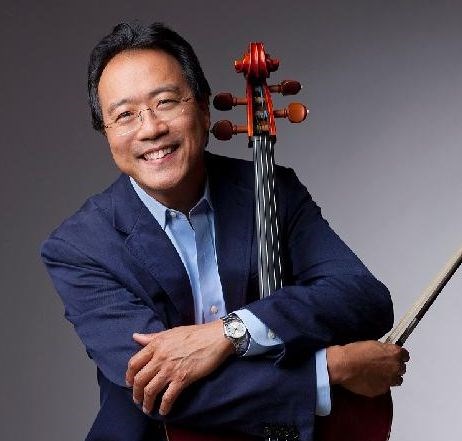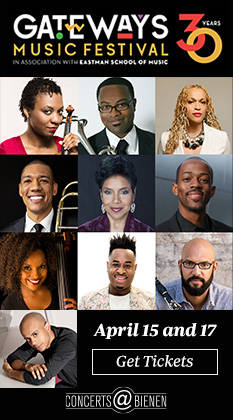Ma and Ax team up for a memorable evening of Brahms

Rewarding as Thursday night’s Chicago Symphony Orchestra program was spotlighting Stravinsky rarities, it clearly wasn’t a popular ticket with copious empty seats at Symphony Center.
Yet twenty-four hours later the same hall was packed with the crowd overflowing to substantial stage seating for a Brahms program with Yo-Yo Ma and Emanuel Ax. Give the people what they want–or who they want–and they will come.
Friday’s concert was the second of this season’s three Brahms Project events curated by Ax, following the pianist’s program with Anne Sofie von Otter last month.
With Brahms’ two cello sonatas as the anchors, the program was filled out with a transcription of Brahms’ Violin Sonata in D major, Op.78, and the world premiere of Brett Dean’s Hommage a Brahms.
Ma and Ax have played this music together more times than anyone could hazard to guess. Yet there wasn’t the slightest hint of routine in the longtime friends’ performances Friday night. If anything, there was a freedom and spontaneity that had the feeling of fresh discovery.
Brahms’ cello sonatas span his career, the first written at age 29, the second coming twenty years later in 1888. Yet these expressive and eloquent performances from Ma and Ax made both works seem like mature masterpieces.
These sonatas are famously difficult for balancing issues. Josef Gänsbacher, the teacher and amateur cellist who was the dedicatee of the First Cello Sonata complained to Brahms that his loud piano playing made Gänsbacher unable to hear his own cello at all. “Lucky for you,” Brahms replied.
There were no such problems Friday with Ax’s skillful keyboard playing keeping an ideal balance with Ma’s cello throughout.
Ma brought a magical delicacy to the limpid second theme of the First Cello Sonata’s opening Allegro, and Ax’s refined playing was simpatico with his colleague’s burnished tone. There was a natural, conversational quality to the music-making, the ebb and flow easy and organic. The piquant minuet-like theme of the central Allegretto went with an uneasy grace that felt just right, with the trio’s more Central European stamp providing contrast. The playing of the fugal finale deftly skirted the more academic elements of this early work, with Ax’s piano playing dramatic and firmly pointed while always keeping the music and balancees in scale.
The performance of the Second Cello Sonata was finer still. The Adagio proved the highlight of the evening, played with great tenderness by both men with beautifully calibrated dynamic detailing by Ma. The ensuing Scherzo was aptly bumptious and the main theme of the final movement, buoyant and lightly articulated, as if telling a children’s story.
Ma and Ax made a fine case for Paul Klengel’s arrangement of Brahms’ Violin Sonata No. 1 in G major, Op. 78. Klengel moves the key to D major, yet artfully keeps the cello high on the fret, reflecting the work’s origins. The two men brought out the wistful quality of the opening movement, and the dark introspection of the Adagio was also most sensitively done, even if the long drawn out coda flirted with indulgence. The rhapsodic final movement was charted with easy charm and panache, the final notes conveying just the right sense of relaxed repose.
Brett Dean’s Hommage a Brahms was co-commissioned by Symphony Center Presents, one of four new piano works being heard in Ax’s Brahms Project concerts this season.
Dean is one of our most consistently compelling voices and his homage is the most recent of a series by the Australian composer paying tribute to various predecessors including Bach, Janacek and Kurtag.
While the three short movements draw some inspiration from Brahms’ piano figurations and textures, there is no sense of pastiche. The first delicately hued section, rather, evokes keyboard music of Debussy and Ravel, French Impressionism with an insistent 21st-century edge. The fast second movement was inspired by the rough waterfront dives in which the teenage Brahms played piano, and the music is suitably sharp-edged and jauntily virtuosic. The final section, reflecting Brahms relationship with Clara Schumann, suggests Mompou in its quiet, widely spaced notes and poised introspection. Dean’s Hommage a Brahms made an impressive debut Friday, and was given a masterful, expressive and fully committed perfomance by Ax.
The enthusiastic ovations brought the men back out for a single encore, an arrangement of the Adagio from Brahms’ Violin Sonata No. 3, with Ma’s glowing tone and the deeply expressive performance offering the perfect end to a Brahms evening.
Posted in Performances





